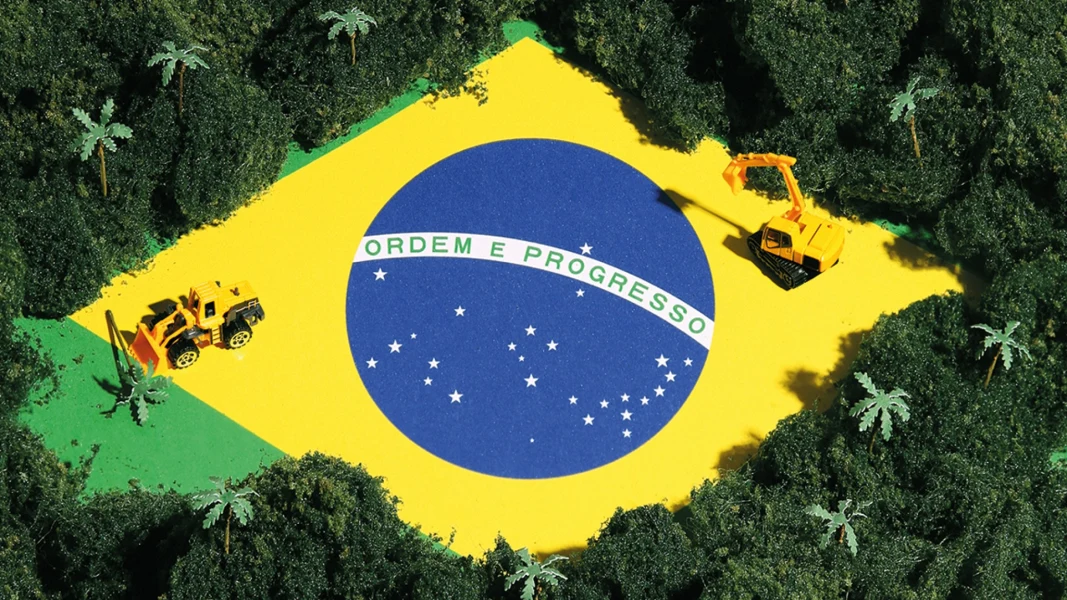It is far less alluring, polarizing, and smaller than the Amazon. It attracts very few tourists and minimal attention from Brazilian and international conservation groups. Nestled between the Paraguay and Paraná rivers lay an isolated area known as the Chaco, home to an approximately 500 mile-long border shared by Brazil and Paraguay. Just southeast of the Pantanal and northwest of Iguazú Falls, two of Brazil’s more famous tourist attractions, it is a sparsely populated region far off in time, distance and imagination from the Amazon and the coast, Brazil’s two most salient geographical features. Due in no small part to this isolation, it is a haven for illegal arms smuggled into Brazil.
The southern Brazilian state of Mato Grosso do Sul is one of Brazil’s least populated states. According to a report released by the Brazilian Federal Police in January 2009, six of a total eight cities on the Brazil/Paraguay border (Ponta Porã , Mundo Novo , Bela Vista, Coronel Sapucaia, Sete Quedas and Paranhos) identified as key transit points for illicit arms smuggling are located in Mato Grosso do Sul, the state that shares this long, uninhabited, and poorly patrolled border with Paraguay. Of the 17 cities identified in the report, 35% are on this 500 mile-long border, which represents just 4.7% of all of Brazil’s international borders.
According to the latest report on the Latin America Growth Agenda published by the Americas Society/Council of the Americas in New York, Brazil’s commitment to environmental preservation is one of the keys to their sustainable growth in the 21st century. Thus, the vast amount of attention focused on the destruction of the Amazon, that quintessentially Brazilian entity that represents national pride in addition to natural beauty, is well deserved. The near complete destruction of the Atlantic Rain Forest, which provides Brazil’s coastal cities with drinking water, is another environmental issue that this emerging hemispheric leader must tackle in the 21st century. Yet equally important to Brazil’s growth is security at its borders and within its cities. Thus, Brazil’s other frontier should also grab attention for its immediate implications for national safety.
On 15 January, a high-ranking military police official was found murdered in Campo Grande, the capital of Mato Grasso do Sul. According to local sources, police are investigating whether the murder was the work of the Liga da Justiça (the Justice Leauge, whose leader’s alias is Ricardo Batman) a Rio de Janeiro-based organized crime ring involved in arms and drug trafficking with a presence that stretches from the desolate outposts in the Chaco to the overcrowded Favelas of Rio de Janeiro. Should a connection be found, the implications would be shocking, as it would point to a connection between Brazilian organized crime and Brazilian police. The latest investigation is not the first of its kind. In October 2008, another member of Brazil’s military police, Ricardo Cavalho dos Santos, was accused of collaborating with Liga da Justiça.
The irony is that many of the arms that are smuggled into Brazil through this stretch end up on the streets of the shantytowns and are used in the bloody confrontations between Brazilian police and residents. Thus, should such a link be found, certain corrupt members of the Brazilian Police Force would at least in theory be partially responsible for the fighting and violence on the streets of Brazil’s cities, especially Rio de Janeiro, located thousands of miles away from the small outposts through which the weapons enter. In short, Brazil’s police would be fighting against people using weapons that were allowed to enter under the auspices of members of that same force.
Further complicating matters for Brazil’s policymakers is the current tenuous relationship between Brasília and Asunción. In November 2008 members of the Brazilian army entered the Brazil-Paraguay border during a routine training exercise to combat of drug smuggling, which is rampant along the Brazil-Paraguay border. This set off a minor political rift between the two nations, who are already at odds over the distribution of energy generated at hydroelectric plant at Itaipú and land distribution and rights on the vast farms in Southwestern Paraguay owned by Brazilians. Already-high tensions at the border may scare both nations into making a decisive act, thus holding back progress against the trafficking organizations.
One solution that may be proposed is to simply increase the numbers of troops at the border. However, more troops does not necessarily translate to success, as Mexico’s troop surge to combat drug trafficking on the US-Mexico border resulted in one of the most violent years in Mexican history. In addition, it will be important to battle corruption from within, because high-ranking officials who partner with trafficking organizations can subvert even the best laid plans. Whatever Brazil decides to do, they must not let the protection of the Amazon from external forces divert their attention from the internal destruction of their police force and cities.

Reply